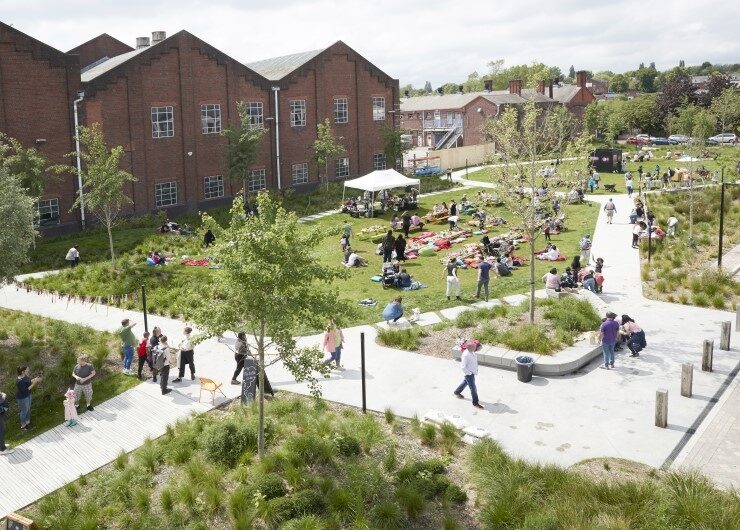Is there a secret sauce?
Despite the known benefits of an active lifestyle, many older adults in Canada and around the globe do not meet physical activity guidelines. Although some community-based interventions enhanced older adults’ physical activity, fewer than 5% were implemented at scale.
For community-based health-promoting programs to have a public health impact, they must be delivered more broadly outside the research setting. This process, known as scale-up, is difficult but not impossible! It comes as no surprise that scale-up often languishes in the “too hard” basket. Scaling up physical activity and other health-promoting interventions takes time, money, and collaboration with many partners committed to the intervention and the scale-up process. As evidence-based interventions must be delivered at scale and sustained to have positive and equitable public health impact—we sought to conquer scale-up challenges.
Our Active Aging Research Team at the University of British Columbia (Vancouver, Canada) addressed the public health challenge of low physical activity and the high prevalence of social isolation and loneliness among older adults. Informed by existing literature, we co-designed an intervention called Choose to Move with community partners and older adults. The key ingredient in our “secret sauce” when it comes to scaling up health-promoting programs is that we “begin with the end in mind”. That is, the intervention and the delivery approach must be adaptable to context; appropriate for the priorities, needs, and capacity of end-users; and scalable by design.
During the three-month Choose to Move program, trained activity coaches guide older adults to set goals, address barriers to physical activity, and choose physical and social activities in their communities that suit their preferences, abilities, and resources. Coaches share healthy living tips and facilitate social interaction during eight group meetings. A central support team uses implementation strategies to help community organizations deliver the program. Across 10 years of evaluation, we have consistently shown that Choose to Move enhances physical activity and mobility and diminishes social isolation and loneliness in participants (with a modicum of “voltage drop” – decreased effectiveness with scale-up).
Since 2015, we worked with community organizations across the province of British Columbia in Canada to scale-up Choose to Move. To do so, we adapted Choose to Move across four phases (Figure). A note to readers about “adaptation” – it is not the enemy; designing interventions and delivery approaches that are adaptable, while staying true to the core functions, is a vital part of scale-up.
Although many frameworks exist, we note two that guided scale-up of Choose to Move (Simmons & Shiffman; Yamey). Across 10 years, community partners have delivered >600 Choose to Move programs to >6000 older adults. Moving forward, we continue to build new partnerships and adapt Choose to Move to better meet the needs of diverse populations and ensure equitable access to Choose to Move.
We have learned a few things about scale-up over the years. This is our secret sauce!
- Pre-implementation planning is essential. Through an equity lens, we engage key partners to seek their input and plan for scale-up at the outset.
- Adaptation is not the enemy. The flexible and choice-based nature of Choose to Move enabled us to adapt the program to achieve “best fit” across diverse delivery contexts and populations. However, we maintained Choose to Move’s core functions, to not compromise its effectiveness.
- Authentic partnerships take time. Trusted partnerships with community-based organizations and government funders were essential to scale-up Choose to Move.
- Central support is integral to scale-up success. Our central support unit provided resources, ongoing training and assistance, and liaised with community partners to help scale-up proceed.
- High-quality evidence matters. Our research team worked closely with the Active Aging Society to generate evidence that informed Choose to Move scale-up. We incorporated research findings through a continual cycle of evaluation-adaptation-implementation.
Choose to Move is one of only a handful of community-based health-promoting programs that were designed with scale-up in mind. Our work shows how authentic partnerships, a flexible intervention, and a continual cycle of evaluation-adaptation-implementation can contribute to scale-up success and increase public health impact.

Take home messages:
- Evidence-based interventions must be delivered at scale and sustained to have positive and equitable public health impact.
- To achieve scale-up success, begin with the end in mind.
- Authentic partnerships, a flexible intervention, and readiness to adapt are part of the secret sauce for scaling-up health-promoting interventions.
Authors and Affiliations:
Dr Heather Macdonald, Active Aging Research Team & Department of Family Practice, University of British Columbia, Vancouver, Canada
Dr Lindsay Nettlefold, Active Aging Research Team, University of British Columbia, Vancouver, Canada
Ms Rebecca Collett, Active Aging Research Team, University of British Columbia, Vancouver, Canada
Dr Heather McKay, Active Aging Research Team & Department of Family Practice, University of British Columbia, Vancouver, Canada




